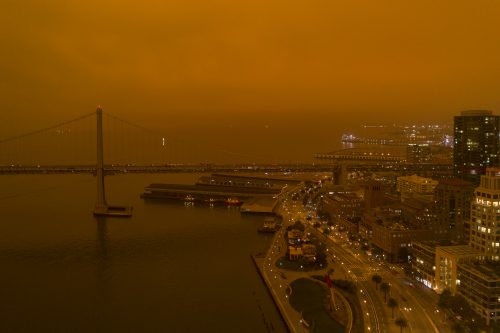

Op-Ed by Michael Verna
UC Berkeley is known for its unique campus environment, balancing top-tier academics and athletics with progressive social attitudes. However, what differentiates Berkeley from other peer institutions, such as UVA, Michigan, and UT Austin, is the geography and weather.
California has some of the world’s most diverse and temperate climates. Remarkably, the Bay Area receives a “Mediterranean climate,” which is the same climate that spawned the great cultures of Egypt, Greek, and Roman Empires. The Bay Area gets a subtle sea breeze throughout the year, allowing daily temperatures between 60-80 degrees year-round. Moreover, unlike other metropolitan areas, Berkeley is situated on the heels of the Oakland hills, as much of the skyline is dominated by mountains to the east and the beautiful silhouette of the San Francisco Bay to the west.
Climate change has caused a change in weather in Berkeley as the climate crisis grows in California From the week of smoke to the lingering heatwaves, students feel the direct impacts of turbulent weather.
Several weeks ago, the beauty of the San Francisco skyline was traded for a smog and smoke-filled silhouette where one could barely make out the city. Walking on campus without an N95 mask meant that your throat began to hurt, and your eyes, given no protection, became irritated. The “experts” during these days advised the community to close doors and use air conditioners and air purifiers. Many students did not have access to AC units or air purification systems because, typically, there is no need.
In terms of architecture, the Bay Area is famous for its windows – they are incorporated into integral parts of structures. Thus, students typically open their windows and let the breeze seep into their dorms or apartments. Similarly to students, the facilities on campus were also caught off guard by the smoke and subsequent heat. Main buildings such as Doe Library, Wheeler, Social Science Building, Haas School of Business, and most UC Berkeley dorms were designed to use the windows for accessing fresh air. Although university facilities provide limited air conditioning, it’s nowhere near adequate. At a premier academic institution, students are packed into crowded, sweaty lecture halls where the medium of ventilation is limited due to periodic poor air quality.
UC Berkeley could be better suited for the effects of the climate crisis. The university is asking too much of its students, from the smokey air to the need for proper air conditioning. Soon, climate change will be disproportionately felt by those who don’t have access to resources. Older, less-funded departments on campus will have classrooms with lower access to air conditioning and fresh air. Individually, students who can afford to buy and operate air purification devices and air conditioners will find little change, but those without will feel the brunt of the changing climate.
Michael Verna is a writer for the Vanguard at Berkeley’s Social Justice Desk